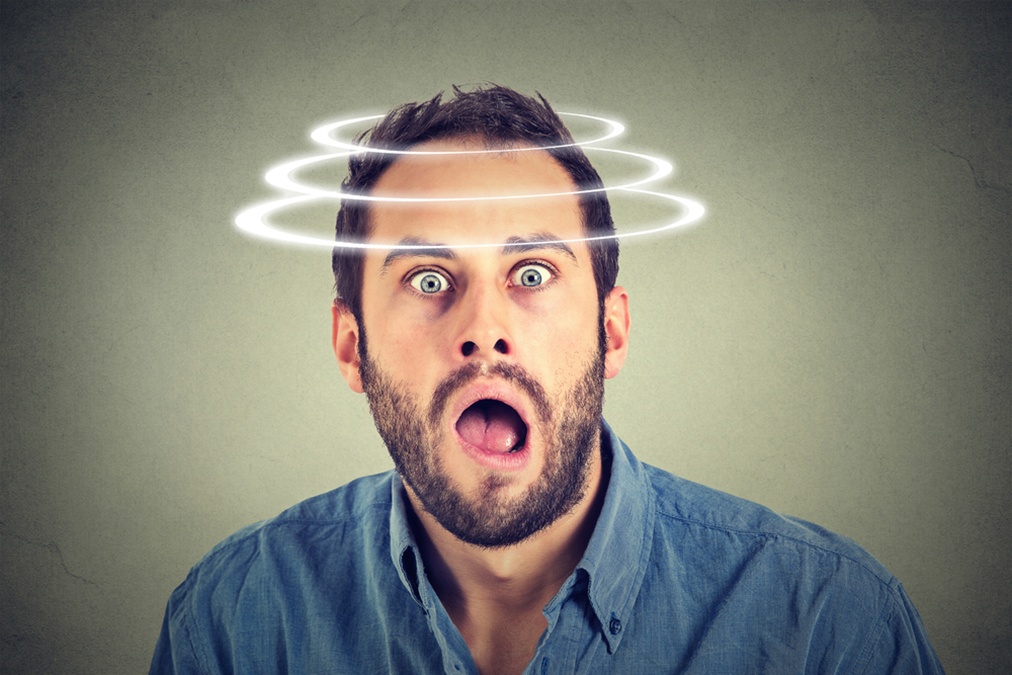 One of the first things doctors usually do when you complain about dizziness or vertigo would be to prescribe medications such as antihistamines, cortisone, Valium, and so forth.
One of the first things doctors usually do when you complain about dizziness or vertigo would be to prescribe medications such as antihistamines, cortisone, Valium, and so forth.
However, a new study published in a Russian journal Zhurnal Nevrologii I Psikhiatrii Imeni SS Korsakova has proven that drug-free treatments are actually extremely effective; in fact, it is at the point of being effective in 100% of the cases.
The researchers collected the names of 599 people who were referred to neurological practices with dizziness, all of whom had received neurovestibular examinations in order to try to identify the source of their vertigo.
A neurovestibular examination examines your brain and ears in order to locate the source of dizziness.
Before these examinations, 44% of the patients had been diagnosed with vertebrobasilar insufficiency, which would be a stroke or mini-stroke, due to decreased blood flow to the brain.
Encephalopathy, another form of brain damage that is due to high blood pressure or atherosclerosis, was incorrectly diagnosed in 35% of cases.
Other misdiagnoses were also common, but strokes and brain damage definitely seemed to be the most common guesses before any proper examinations were done.
Once the neurovestibular examinations had been done, the results were as followed:
39% were diagnosed with benign paroxysmal positional vertigo (a condition involving the balance system in the ears), 29% had phobic postural vertigo (a psychological condition), 14% had Meniere’s disease (another ear/balance condition), 11% had vestibular neuritis (inflammation of a nerve in the inner ear), and 5% had multisensory dizziness, a condition that mostly affects elderly people.
It is quite amazing that almost all the stroke and brain damage diagnoses fell away once a proper examination was performed. Hopefully, that makes you feel better the next time you have a vertigo attack.
For the benign paroxysmal positional vertigo patients, basic repositioning maneuvers were effective in 90.2% of cases after the first treatment and were effective in 100% of the cases after the second treatment.
Benign paroxysmal positional vertigo happens when calcium carbonate crystals accidentally fall into semicircular canals in your inner ear, so basic head movements would easily remove these from the canals.
Furthermore, patients with vestibular neuritis, Meniere’s disease, and phobic postural vertigo also significantly benefited from vestibular exercises and training on a stabilo platform that had biofeedback.
A stabilo platform with biofeedback is a way to train your brain and ears to stop sending incorrect balance signals in response to perfectly normal movements.
To do this, you repeatedly perform the actions that make you feel dizzy while a computer program shows you stabilized images of you and your environment.
This clearly shows that natural methods are enough to treat vertigo and dizziness.

 Overcoming IBD
Overcoming IBD Multiple Sclerosis
Multiple Sclerosis Banishing Bronchitis
Banishing Bronchitis Gum Disease Gone
Gum Disease Gone Overcoming Onychomycosis
Overcoming Onychomycosis Neuropathy No More
Neuropathy No More The Prostate Protocol
The Prostate Protocol Brain Booster
Brain Booster
 Ironbound
Ironbound
 Solution for Shingles
Solution for Shingles
 The Bone Density Solution
The Bone Density Solution
 The Ultimate Healing Protocol
The Ultimate Healing Protocol
 The Parkinson's Protocol
The Parkinson's Protocol
 The Chronic Kidney Disease Solution
The Chronic Kidney Disease Solution
 Overthrowing Anxiety
Overthrowing Anxiety The Fatty Liver Solution
The Fatty Liver Solution The Hypothyroidism Solution
The Hypothyroidism Solution
 The End of Gout
The End of Gout The Blood Pressure Program
The Blood Pressure Program
 The Oxigized Cholesterol Strategy
The Oxigized Cholesterol Strategy
 Stop Snoring And Sleep Apnea Program
Stop Snoring And Sleep Apnea Program
 The Arthritis Strategy
The Arthritis Strategy The Vertigo & Dizziness Program
The Vertigo & Dizziness Program The 3-Step Diabetes Strategy
The 3-Step Diabetes Strategy Hemorrhoids Healing Protocol
Hemorrhoids Healing Protocol The Erectile Dysfunction Master
The Erectile Dysfunction Master Weight Loss Breeze
Weight Loss Breeze The IBS Program
The IBS Program The Insomnia Program
The Insomnia Program The Migraine and Headache Program
The Migraine and Headache Program The Neck Pain Solution
The Neck Pain Solution The Menopause Solution
The Menopause Solution The Ejaculation Master
The Ejaculation Master The TMJ Solution
The TMJ Solution The Acid Reflux Solution
The Acid Reflux Solution The Fibromyalgia Solution
The Fibromyalgia Solution The Psoriasis Strategy
The Psoriasis Strategy